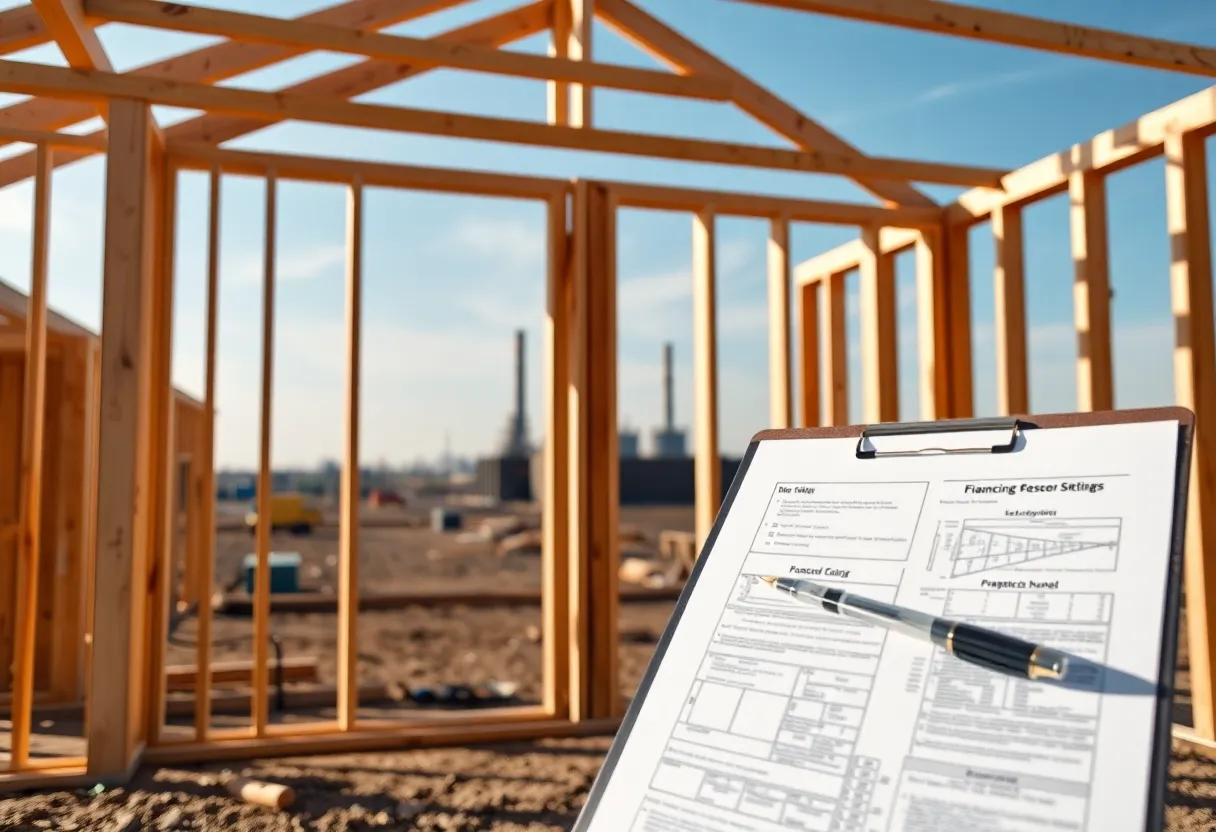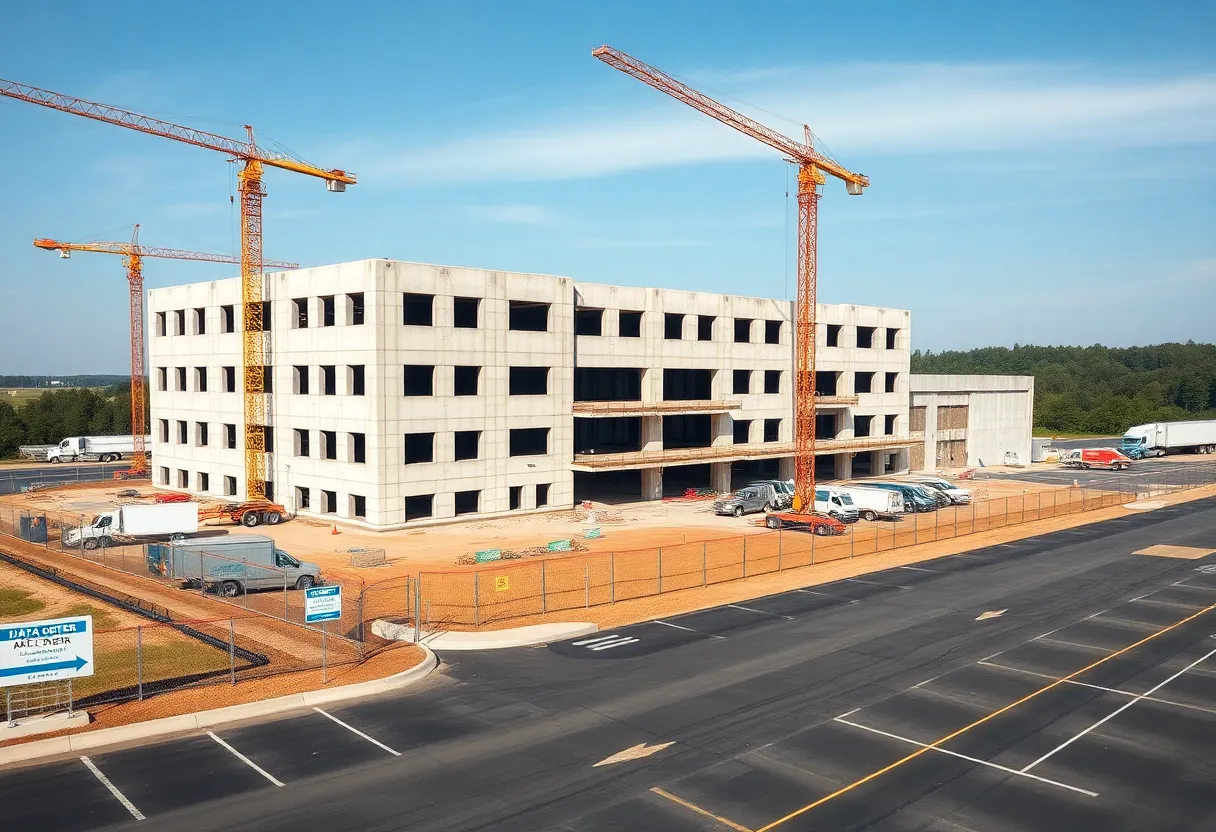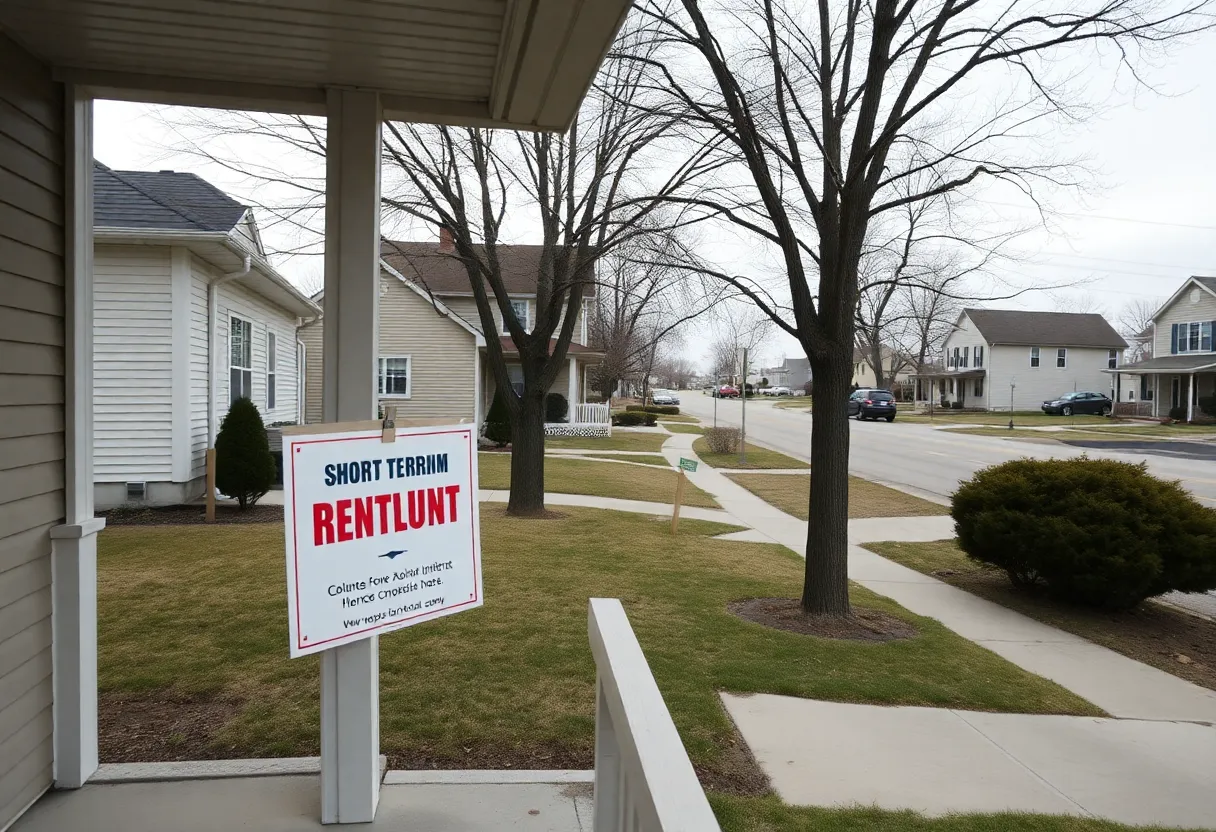Montana, USA, August 26, 2025
News Summary
Mortgage brokers are increasingly pursuing one‑time close construction loans across FHA, VA, USDA and conventional products to serve first‑time buyers and new home builders. The single‑closing structure reduces fallout risk, lowers upfront cash needs, and pays brokers at one permanent close rather than a separate refinance. Meanwhile, a $1.44 billion DOE loan guarantee for a Montana renewable fuels expansion has been unfrozen with an initial $782 million draw, and a regional Montana bank reported solid Q2 earnings driven by loan growth and wider net interest margins. Builders, brokers and buyers must manage documentation and builder approvals to convert inquiries into funded builds.
Construction Lending Surge Offers Brokers a New Lead Strategy; Big Montana Energy Loan Re‑Activated; Regional Bank Posts Strong Q2
The mortgage and construction markets are shifting as brokers chase one‑time close construction loans and down‑payment assistance leads, while a major federal loan for a renewable fuels expansion in Montana was reactivated and a regional bank reported improved second‑quarter earnings. Industry contacts report growing demand for construction lending options from first‑time buyers and loan officers alike, even as elevated mortgage rates and tight household budgets keep many buyers on the sidelines.
Why brokers are focused on one‑time close construction loans
Lenders that offer a single closing for both construction and permanent financing are drawing attention because they reduce several common risks and costs. A one‑time close removes the need for borrowers to go through a second qualifying process and avoids extra closing costs tied to a separate permanent loan closing. That structure protects originators from the risk of a borrower failing to qualify at the end of construction and ensures brokers and loan officers receive their compensation at the loan closing rather than waiting until the finish of construction.
Wholesale lenders that support one‑time close products across government and conventional programs are especially attractive to brokers pursuing construction and down‑payment assistance leads. Lenders with dedicated in‑house construction teams help coordinate the underwriting and construction oversight needed for these loans, simplifying the process for originators and borrowers. Brokers are advised to make sure both underwriting and construction departments receive complete documentation to avoid delays, since construction lending typically requires coordination between two internal teams.
Loan program mechanics and buyer impact
One‑time close options are available for FHA, VA, USDA and conventional loan products in some lending channels. Program features vary: some construction loans require no payments during the build period, while others require interest‑only payments during construction. FHA construction loans can offer a period with no payments during the build, and certain VA and USDA programs can permit dirt‑up construction with zero down for eligible borrowers. FHA new construction down payment requirements can be as low as 3.5 percent for qualified buyers.
From the borrower perspective, apart from differences in internal lender steps and construction oversight, a construction loan can look very similar to purchasing an existing home. The biggest extra steps for lenders and brokers are builder approval and delivering appropriate documentation to both underwriting and construction departments.
Market signals: broker interest and opportunity
Industry contacts report steady weekly inquiries about construction loans and down‑payment assistance, signaling rising interest from loan officers and consumers who want to build homes from scratch. Many mortgage originators are finding construction lending a profitable niche that helps them stand out from competitors offering only standard purchase loans. Brokers who learn and promote these programs can gain a competitive edge in markets where traditional inventory and affordability remain constrained.
Montana Renewables loan unfrozen and project timeline
A federal loan guarantee enabling expansion of a renewable fuels facility in Montana was cleared to resume after a temporary pause for federal review. The guaranteed loan includes roughly $1.44 billion in principal plus $233 million of capitalized interest, for a total referenced facility of about $1.67 billion. An initial draw of approximately $782 million was reported as the first tranche toward eligible previously incurred expenses and was followed by an additional equity infusion by the parent company.
The funding supports expansion of sustainable aviation fuel and renewable diesel capacity, targeting about 300 million gallons per year of SAF and roughly 330 million gallons of combined output once fully completed. Project plans call for modular additions, a second reactor to bring about half of SAF capacity online by 2026, and construction completion by 2028. The loan carries a long amortization window and defers principal and interest servicing until project commissioning.
Local approvals, tax abatement and appeals
The facility’s owner has applied for a tax abatement on several million dollars of equipment installed in 2024 under a state law that allows county discretion over abatement levels for renewable fuels investments. The company also has pending tax appeals covering earlier years and a dispute with the state environmental regulator about which pieces of equipment qualify as tax‑exempt pollution control systems. Local hearings and administrative scheduling remain active as parties review valuation and certification issues.
Regional bank posts solid Q2 financials
A Montana‑based bank holding company reported net income of $3.2 million in the second quarter of 2025, matching the prior quarter and improving from roughly $1.7 million a year earlier. The company declared a quarterly cash dividend and reported growth in total assets to about $2.14 billion and higher net interest margin, which rose to 3.91% in Q2.
The bank originated more residential mortgages in the quarter than in the prior quarter and increased total loans year over year, with notable growth in commercial real estate and agricultural loans. Residential construction and commercial construction and development balances were lower year‑over‑year, while home equity lending rose. Deposit balances increased and the deposit mix shifted toward higher‑yielding products. Credit metrics remained conservative, with a larger allowance for credit losses relative to nonperforming loans and low net charge‑offs.
What this means for builders, brokers and rural economies
For builders and broker networks in regional markets, expanded one‑time close construction lending and federal support for renewable fuels projects can both spur construction activity and regional economic development. Lenders offering coordinated construction services are positioned to capture construction and purchase business. Meanwhile, large project funding and local tax decisions could influence jobs, feedstock markets and ancillary infrastructure in agricultural and energy supply chains.
Frequently Asked Questions
What is a one‑time close construction loan?
A one‑time close construction loan bundles the construction financing and the permanent mortgage into a single loan and a single closing. This avoids a second refinance closing at the end of construction and can reduce closing costs and qualification risk for borrowers and originators.
Which loan products can be used for one‑time close construction loans?
One‑time close options exist for FHA, VA, USDA and conventional loan programs in some lending channels. Program rules and payment requirements vary by product.
How are payments handled during construction?
Payment requirements depend on the program. Some programs allow no payments during construction for a set period, while others require interest‑only payments during the build phase.
Why are brokers interested in construction lending now?
Brokers see construction lending as an opportunity to win clients and earn fees sooner, differentiate their services, and work in a niche with growing demand as some buyers turn to building to solve inventory shortages.
What is the status of the Montana renewable fuels project loan?
The federal loan guarantee for the Montana renewable fuels expansion was reactivated after a brief federal pause and an initial draw of funds was applied toward eligible project expenses. Remaining draws are planned during construction through project completion in 2028.
How did the regional bank perform in Q2 2025?
The bank reported stable quarterly net income of $3.2 million, asset growth, an improved net interest margin, higher originations and increased deposits, along with continued conservative credit reserves.
Key Features at a Glance
| Feature | Details |
|---|---|
| One‑time close availability | Offered across FHA, VA, USDA and conventional channels by select wholesale lenders with in‑house construction teams |
| Brokers’ benefit | Fee paid at loan closing; reduced refinance/qualification risk after construction |
| Borrower benefit | No second close fees; potential zero‑down options for VA and USDA; FHA down payment from 3.5% on new construction |
| Montana renewable loan | $1.44B principal loan guarantee with $233M capitalized interest; initial $782M draw; expansion through 2028 |
| Local tax and regulatory issues | Recent tax abatement application, pending tax appeals and a dispute over pollution control certification |
| Regional bank Q2 highlights | $3.2M net income in Q2 2025, assets $2.14B, NIM 3.91%, dividend declared, loan and deposit growth |
Deeper Dive: News & Info About This Topic
Additional Resources
- FuelCellsWorks: Montana Renewables announces closing of $1.44 billion DOE loan facility
- Wikipedia: Sustainable aviation fuel
- GlobeNewswire: Eagle Bancorp Montana Q2 2025 results
- Google Search: Eagle Bancorp Montana Q2 2025 earnings
- GlobeNewswire: Q2 2025 supplemental resource (download)
- Google Scholar: DOE loan guarantee Montana renewable fuels
- The Electric GF: Sen. Daines — $1.44B federal loan to Calumet back on
- Encyclopedia Britannica: Calumet renewable fuels (search)
- REBusinessOnline: Gantry secures $10.5M loan for multifamily community in Montana
- Google News: Gantry multifamily loan Montana
Author: Construction TX News
TEXAS STAFF WRITER The TEXAS STAFF WRITER represents the experienced team at constructiontxnews.com, your go-to source for actionable local news and information in Texas and beyond. Specializing in "news you can use," we cover essential topics like product reviews for personal and business needs, local business directories, politics, real estate trends, neighborhood insights, and state news affecting the area—with deep expertise drawn from years of dedicated reporting and strong community input, including local press releases and business updates. We deliver top reporting on high-value events such as the Texas Construction Expo, major infrastructure unveilings, and advancements in construction technology showcases. Our coverage extends to key organizations like the Associated General Contractors of Texas and the Texas Building Branch, plus leading businesses in construction and real estate that power the local economy such as Austin Commercial and CMiC Global. As part of the broader network, including constructioncanews.com, constructionnynews.com, and constructionflnews.com, we provide comprehensive, credible insights into the dynamic construction landscape across multiple states.





